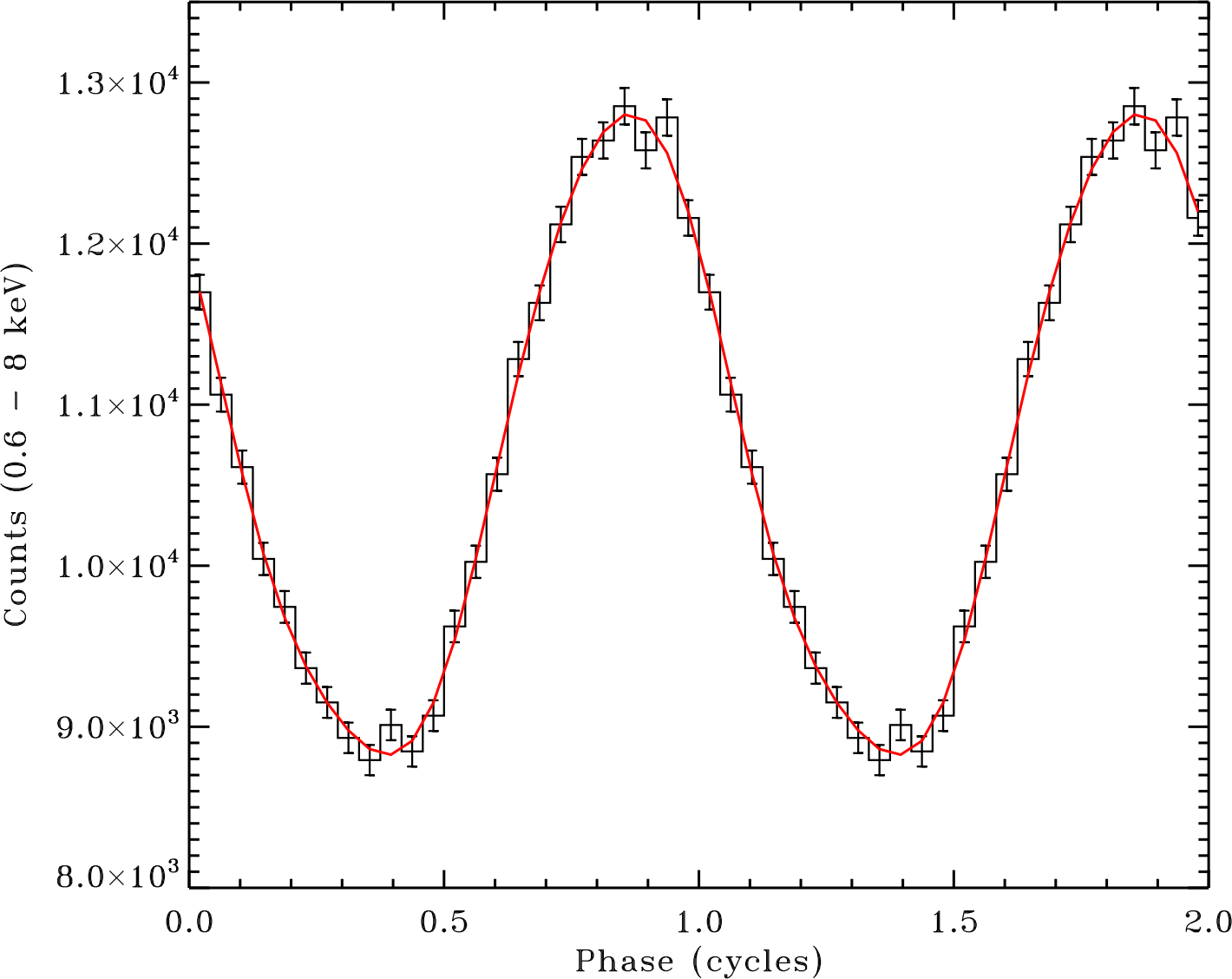NICER / ISS Science Nugget
for February 13, 2025
Notification to publication, in record time
At this time of year, the central regions of the Milky Way emerge from behind the Sun and a key category of NICER science targets - neutron stars and black holes within our Galaxy - becomes accessible to Earth-bound telescopes. Most of these objects are transient emitters of X-rays, flaring to life after, typically, years of dormancy.
In the past week, NICER has fielded nine requests for urgent observations of active inner-Galaxy targets (and a similar number for targets in other parts of the sky). One of these, known as IGR J17511-3057, is an accreting millisecond pulsar discovered in 2009 and last seen in outburst in 2015 (two years before NICER launched). The neutron star in this system, drawing matter from its low-mass companion star in a 3.5-hr orbit, has been spun up to a high rate of rotation: once around every 4.1 milliseconds, or 245 revolutions per second. A hot spot, presumably where the accreting matter crashes onto the surface, is carried around by the spinning star, into and out of our sightline, resulting in apparent pulsations that NICER detects. The European INTEGRAL telescope, which routinely scans the inner Galaxy for transients, detected emission from the direction of IGR J17511 on Feb 10-11; an Astronomer's Telegram (ATel) was posted to inform the community. Members of the NICER Science Team and external NICER users requested prompt followup.
NICER observed IGR J17511 on two successive ISS orbits for a total exposure of 1,490 seconds; the expected 4.1 ms pulsations were immediately evident, confirming that IGR J17511 is active and was responsible for the INTEGRAL detection in this crowded part of the sky. The NICER data were rapidly downlinked, converted from raw telemetry to a standard file format for use by scientists, and distributed to those who requested the observations. A team led by M. Ng (McGill Univ.) promptly analyzed the data, wrote up their results, and posted ATel #17032. The time elapsed from receipt of the first request by the NICER operations team to the publication of the ATel was 5 hours and 42 minutes, a new record for NICER, beating our previous record of 6 hrs 13 min (set in 2019, ATEL #13086). Among other new findings, the NICER data show that the pulsar's spin has perceptibly slowed since 2015.
The current outburst of IGR J17511 is expected to last a few weeks. Rapid communication of NICER results enables users to make informed decisions about committing time on other telescopes for followup observations at other wavelengths. NICER's responsiveness to events in the sky and to its user community is the foundation of the important role it plays in time-domain astronomy.

X-ray pulsation profile of the accreting millisecond pulsar IGR J17511-3057, from data collected by NICER on Feb 11 following a request for a rapid-turnaround observation. Two cycles of the same data - X-ray photon counts averaged across many 4.1 millisecond rotation periods and accumulated into 24 pulse-phase bins - are shown for clarity. Approximately 20% of the received photons are pulsed. The red trace represents a best-fit model that includes a sinusoid at 244.48 Hz and a harmonic at twice that frequency. (Credit: T. Strohmayer, NASA GSFC)
<< Previous
Main Index